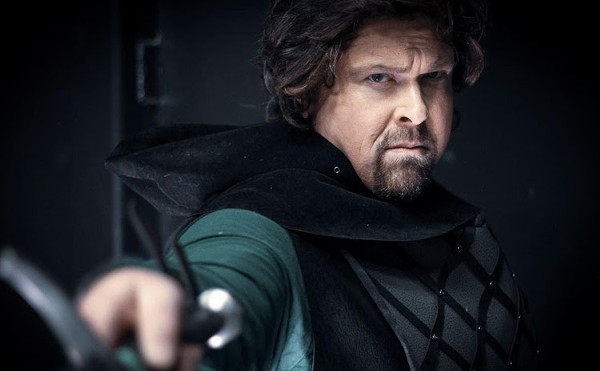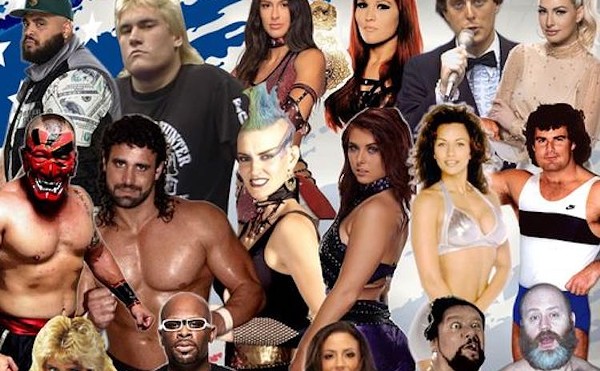Metroid:Other M
Nintendo Wii
At this point, Samus Aran, the blonde heroine of Nintendo's long-running Metroid series, really doesn't have anything left to prove. She's starred in 11 — 11! — different video games, dating all the way back to the days when Ronald Reagan camped in the White House. She already became the subject of gaming's greatest Crying Game moment when she removed the helmet on her bright and shiny power suit at the end of the first Metroid, a move that sent gamer jaws plummeting directly to the floor.
Oh, and it sparked the creation of a classic 'Metroid is a girl?' T-shirt. Seriously. You could buy one. Just don't actually wear it in public, OK?
Back then the concept of a female video- game protagonist was only slightly less unusual than a successful NFL team not from Pittsburgh, Dallas or San Francisco. That's what made Samus so cool: None of the other video-game heroes — not even Mario, from whom she copped some of her platforming moves — packed her particular brand of firepower. None of them could convert themselves into a deadly superball and bowl through enemies like Samus.
It'd be easy enough to praise Metroid: Other M, the newest and latest Metroid game for all the interesting choices it makes — things that fly in the face of what passes for safe and boring game design. There's the way the game switches between a more trad-itional 3-D perspective (which has you holding the controller horizontally, of all things), and a first-person/motion-sensing control, all the better to examine things and then blast them with powerful missiles. As challenging as the back-and-forth control is to get used to, you have to give the designers credit for creating a sci-fi action game that shakes things up and keeps you interested. But that's not why I'm so intrigued by Other M.
Here's why: Samus Aran finally gets to speak for herself, and it's about time.
Samus has never been much of a talker. Through 10 of the 11 Metroid games, she never utters a single word as she blasts away at space pirates and gives Robot Ridley a few much-needed laser lashes to the kisser. If Other M is any indication, she's been holding in enough feelings to fill about 50 guest slots on Oprah.
Another unusual aspect of Other M — at least in contrast to other Metroid games — is its torrid love of cut scenes. There are actually enough here to make you think that the game was secretly designed by Metal Gear Solid creator Hideo Kojima. Most of them focus on Samus, who, in a detached voice that would register maybe a three on Spinal Tap's amp scale, gives a picture of a heroine who's more mature, tortured warrior than kick-ass sex symbol. We learn that she's hardened by the apparent loss of the baby alien who augmented her powers and helped her smack down Mother Brain in Metroid Prime 3. She's haunted by rash and immature decisions she made in her early days with the Galactic Federation and the ways those choices have driven her to be a loner. In other words, she's a lot like the rest of us real humans — minus the aliens and Galactic Federation stuff.
This is the kind of complex character depth that's often sadly (and shockingly) missing from female video-game characters. Both developers and, to a certain degree, gamers lament the imbalance between the sexes when it comes to this topic. Some, including yours truly, argue that it's one of the biggest reasons why women don't tend to be as into gaming as men. For every Kratos and Matthew Shepard, for every Dante or Batman, there's a female video-game character stereotype.
For the most part, these female characters are either helpless damsels in distress (think Princess Peach), or they're curvy caricatures whose sexuality overshadows everything else about them, even their capable toughness (think Bayonetta and Heavenly Sword's Nariko). Yes, playing up sex appeal is part of playing to the base audience, but it's also tantamount to alienating 50 percent of potential customers.
Metroid: Other M may be an indication that the landscape is shifting ever so subtly, yet again. Even Lara Croft, who for years was the literal poster girl for much of what was wrong with female video-game characters, seems to have gained some new perspective. Literally. In her most recent adventure, the downloadable Lara Croft and the Guardian of Light, the third-person camera that formerly focused on her curves like a leering frat boy after a few too many Bud Lights has given way to an isometric view that's reminiscent of Diablo. While Lara still sports her trademark tight shirt and short shorts, there are no in-game camera angles focusing lasciviously on her pixilated body.
Nobody's likely to argue that we've finally reached a point where we can declare victory for female video-game characters. But if Samus Aran, one of the first ladies of video-game heroism, is finally worthy of a little depth and understanding, maybe there's hope for the rest of the ladies, too.
[email protected]















